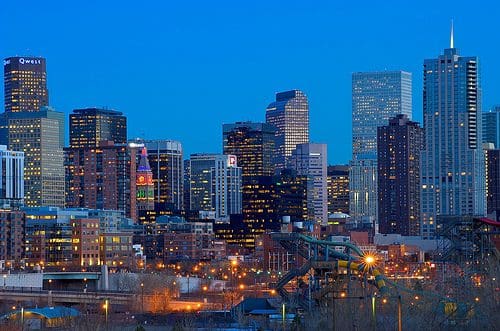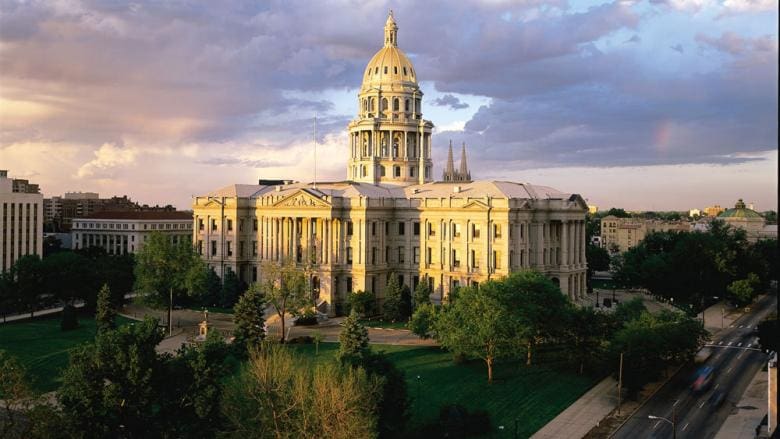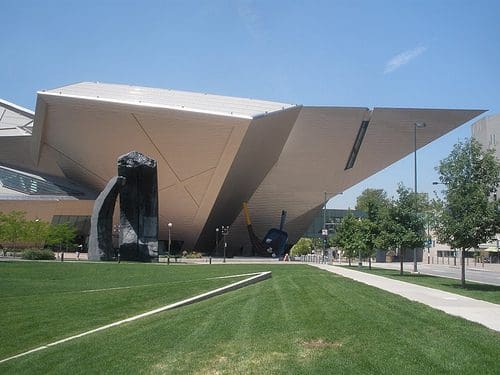
In 1859, gold was discovered on the South Platte River and the resulting Gold Rush made Denver a boomtown by 1861. Within 20 years it was named the capital of Colorado and a century and a half later Denver is the business and financial center of the Rocky Mountain region. Mining company headquarters, technology and telecommunications manufacturers, as well as an active livestock market are the major business of the area. Denver draws plenty of tourism, too, with its proximity to many ski resorts and national parks. In addition, the city is home to eight professional sports teams and has four major stadiums, so sports mania brings tens of thousands of visitors to the mile high city.
Sightseeing in Denver

Denver’s downtown surrounds a mile-long outdoor pedestrian mall. Even with the requisite high-rise office buildings, hundreds of restaurants and grand hotels, downtown doesn’t feel like a huge sprawling city. In fact, from the most prominent building, the gold-domed Colorado State Capitol Building, most of the sights of interest are within walking distance.
Known as the ‘Mile High City,’ Denver isn’t actually in the mountains. It’s located on a high plateau 12 miles east of the Rocky Mountain foothills. The majestic mountain view is ever-present from the city. In fact, it’s against state law to construct a building that would block the view of the mountains from the Capitol building. Denver takes its nickname from its altitude – exactly 5,280 feet above sea level measured at the gold step of the Capitol building. Travel Maestro tip: Altitude sickness feels like the flu and can ruin a trip. Be sure to drink plenty of water before and during a trip to Denver and limit alcohol consumption.
Denver has several interesting and eclectic neighborhoods. One to note in particular is the Lower Downtown District, known as LoDo, where a “skid row” of rundown warehouses have been meticulously renovated into classy attractions. The area is chock full of jazz clubs, art galleries, restaurants and coffee houses. It is the place to stroll – day or night. Travel Maestro tip: Pick up a self-guided walking tour map at any shop or bookstore in the area and peruse the Victorian architecture of the oldest core of commercial buildings in Colorado (circa 1860).

The arts district features striking modern architecture: the Denver Public Library with multicolored stone turrets, the soaring Museum of Contemporary Art and the abstract Denver Art Museum.
Doing Business in Denver
Business attire ranges from traditionally conservative where power suits are the norm, to a decidedly more casual approach where well-worn cowboy boots are du rigor. If you don’t know the culture of the company you are visiting, err on the side of formality, but be prepared to ‘dress down’ if your hosts are more casual.
Do pack sunglasses, a hat and sunscreen. With 300 days of sunshine a year – more than San Diego or Miami – and the high altitude, you need to protect against the rays. Summers run in the mid-80s to mid-90s F and winters bring plenty of snow, but the weather can change quickly any time.
To travel from the airport into downtown, the least expensive way is the skyRide public transportation bus. It takes about an hour and costs $9 – $13 depending on destination (no credit cards). For door-to-door private service, taxis have a flat rate of $51 between the airport and downtown. Travel Maestro tip: Don’t cut your time short getting to your flight. Airport officials recommend to allow 35 minutes from the terminal to your gate, security delays notwithstanding.
For information on Denver hotels or Colorado ski resorts, please contact Covington’s expert advisors.






Leave a Reply